Navigating the world of nutritional supplements can be overwhelming, and one product gaining significant attention lately is protein shots. These compact, power-packed supplements promise a quick and efficient protein boost, ideal for those on the move. But what exactly are protein shots, and how do they differ from the myriad of other protein products on the market? In this comprehensive guide, we’ll delve deep into the world of protein shots, exploring their benefits, how they compare to traditional protein powders, and much more. Whether you’re a fitness enthusiast or simply someone curious about the latest in nutrition trends, this post is tailored for you.
Table of Contents
History of Protein Supplementation
The journey of protein supplementation has evolved significantly over the years, shaping the way athletes and fitness enthusiasts achieve their goals. Let’s trace back through history to understand the inception and progression of this nutritional powerhouse.
Early Beginnings:
Protein has always been a crucial component of our diet. Ancient civilizations recognized the importance of protein-rich foods, such as meat, dairy, and legumes, for muscle growth, repair, and overall health. While they might not have had the science to explain it, they recognized its effects on strength and vitality.
First Bodybuilding Booms:
Fast forward to the late 19th and early 20th centuries, when bodybuilding began to gain traction. Early bodybuilders primarily relied on natural food sources for their protein needs. It was common for them to consume large quantities of meat, eggs, and milk to help build muscle.
Birth of Protein Powders:
The 1950s saw the introduction of the first commercial protein powders. Made predominantly from soy and casein, these powders promised convenience and a concentrated source of protein. As bodybuilding and weightlifting gained popularity in the subsequent decades, so did these supplements. The 1970s and 1980s, in particular, witnessed an explosion in protein powder varieties and flavors.
Modern Innovations – The Arrival of Protein Shots:
While powders dominated the market for years, consumers began to seek even more convenient and faster-absorbing alternatives. Enter the protein shot: a compact, ready-to-drink product that delivers a quick protein boost without the need for preparation. These shots emerged in the late 1990s and early 2000s and offered a solution for those on the go, needing an immediate post-workout recovery option or a quick protein fix during a busy day.
In summary, the history of protein supplementation is a testament to humanity’s pursuit of physical betterment and nutritional advancement. From whole foods to the convenience of protein shots, our relationship with protein has always evolved to suit our changing lifestyles and needs.
What are Protein Shots?
Protein shots, a relatively modern addition to the world of nutritional supplements, are compact, liquid-based servings of protein designed for quick consumption. They cater to the needs of those who seek a swift and straightforward way to meet their protein requirements without the hassle of mixing powders or preparing protein-rich meals.

Composition:
Protein shots primarily consist of hydrolyzed protein, which means the protein is broken down into smaller fragments, allowing for faster absorption by the body. This hydrolyzed protein is usually derived from sources like whey, collagen, or soy. In addition to protein, these shots might also contain vitamins, amino acids, and other beneficial compounds.
Convenience:
One of the primary appeals of protein shots is their convenience. They’re portable, require no preparation, and offer an instant protein boost, making them ideal for post-workout recovery, midday slumps, or supplementing a protein-deficient meal.
Taste and Texture:
Given their concentrated nature, protein shots can vary in taste and texture. While some are smooth and flavorful, others might have a more intense protein taste. Over time, brands have improved their formulations, offering a wider range of flavors and smoother textures to cater to different palates.
Dosage:
Typically, a protein shot provides between 15 to 30 grams of protein, depending on the brand and formulation. This concentrated dose makes it easier for individuals to reach their daily protein intake goals, especially when they’re short on time or away from traditional protein sources.
In essence, protein shots provide a fusion of convenience and nutrition, capturing the essence of modern dietary supplementation. Whether you’re an athlete, a busy professional, or just someone aiming to up your protein intake, protein shots offer a swift and efficient solution.
Benefits of Protein Shots
Protein shots have surged in popularity due to the myriad of benefits they offer. As we delve into the advantages of these compact powerhouses, you’ll understand why they’ve become a staple for many health enthusiasts.

- Quick Absorption:
Protein shots, especially those made from hydrolyzed proteins, are absorbed faster by the body. This rapid assimilation can be especially useful post-workout when your muscles are eager for a protein boost to start the recovery process. - Convenience:
Arguably one of the biggest selling points, the convenience factor of protein shots cannot be overstated. No need for blenders, shakers, or even a spoon. Just open, drink, and you’re good to go, making them perfect for busy lifestyles. - Portability:
Their compact size makes protein shots easy to slip into a gym bag, purse, or even a pocket. Whether you’re traveling, heading to the gym, or stuck in back-to-back meetings, they ensure you always have a protein source at hand. - Controlled Dosage:
Each shot is a measured dose of protein. There’s no guesswork involved, which can be particularly beneficial for those tracking their macronutrient intake meticulously. - Low in Calories:
Many protein shots are formulated to be low in calories while still providing a substantial amount of protein, making them an excellent choice for those on calorie-restricted diets. - Diverse Flavors:
Protein shots come in a plethora of flavors, catering to varied tastes. Whether you prefer fruity, chocolatey, or even coffee-flavored, there’s likely a protein shot out there for you. - Supports Muscle Growth and Repair:
Like all protein sources, protein shots aid in muscle growth and repair. Their quick absorption rate can accelerate recovery, especially after intense physical activity. - Satiety:
Protein is known to promote feelings of fullness, and despite their small size, protein shots can help curb hunger pangs, making them a handy tool for weight management.
In summary, the benefits of protein shots extend beyond just their protein content. Their convenience, portability, and diverse flavor options make them a versatile and efficient way to ensure you’re meeting your protein needs, no matter your lifestyle.
Comparison: Protein Shots vs. Protein Powders
Protein supplementation has become a linchpin in many fitness regimens and diets. While protein powders have long dominated the market, the emergence of protein shots has led to inevitable comparisons. Let’s break down the key differences and similarities between these two popular protein sources.

- Form and Consistency:
- Protein Shots: Typically liquid in form, protein shots are ready-to-drink. Their consistency is similar to that of a thick juice or a light smoothie.
- Protein Powders: As the name suggests, these are in powder form and require mixing with water, milk, or another liquid to consume. They can be used to make shakes, smoothies, or even baked into foods.
- Convenience:
- Protein Shots: These score high on convenience. Grab, open, drink – it’s that simple.
- Protein Powders: Require a bit more preparation. You’ll need a liquid to mix them in and, ideally, a shaker or blender for a smooth consistency.
- Versatility:
- Protein Shots: Are generally consumed as-is, offering limited versatility.
- Protein Powders: Can be incorporated into a wide variety of recipes, from shakes and smoothies to pancakes and muffins.
- Taste and Flavor Options:
- Protein Shots: Come in a range of flavors, but the options might be more limited compared to powders.
- Protein Powders: Offer a plethora of flavors, allowing users to find one that suits their palate.
- Portability:
- Protein Shots: Extremely portable due to their compact size.
- Protein Powders: While portable, you’ll need additional items (like a shaker) to consume it on-the-go.
- Cost:
- Protein Shots: Tend to be more expensive on a per-serving basis.
- Protein Powders: Generally offer better cost-effectiveness, especially when bought in bulk.
- Shelf Life:
- Protein Shots: Given their liquid form, they might have a shorter shelf life compared to powders.
- Protein Powders: Typically have a longer shelf life and don’t require refrigeration.
In essence, both protein shots and protein powders serve the primary function of providing a concentrated protein source. The choice between them often boils down to individual preferences, lifestyle, and specific needs. While protein shots shine in convenience and portability, protein powders offer versatility and a broader range of flavors. It’s worth trying both to see which aligns best with your preferences and daily routine.
How Protein Shots are Made
The growing demand for convenient protein sources has ushered in the era of protein shots. But how are these compact, potent sources of protein made? Let’s delve into the process.
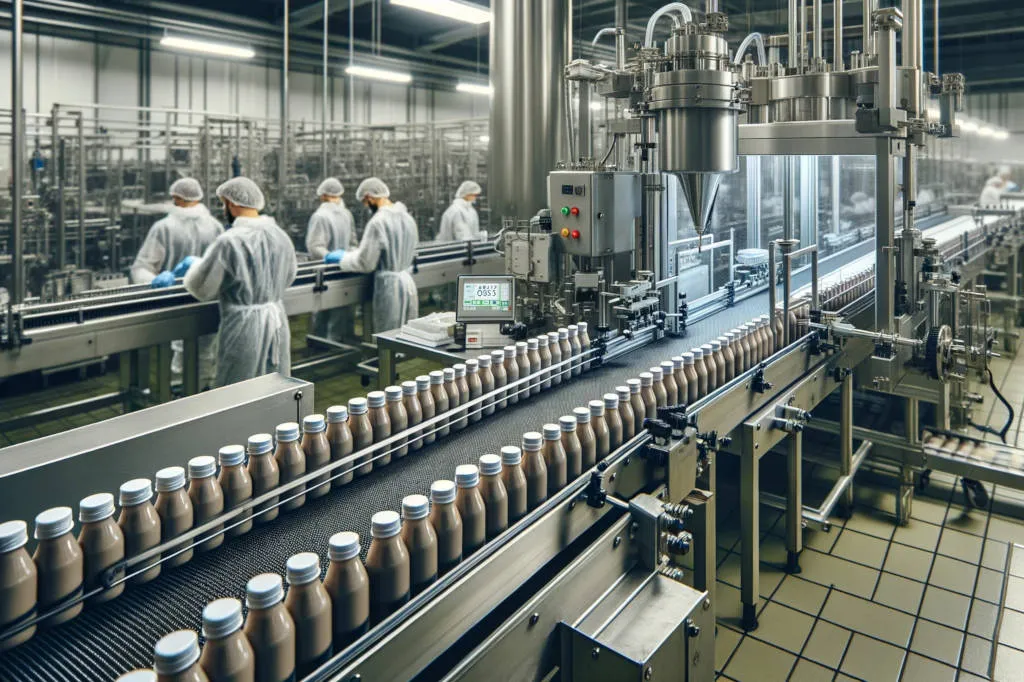
- Protein Source Selection:
The foundation of any protein shot is, of course, the protein itself. Manufacturers typically choose from whey, casein, soy, pea, or other plant-based proteins. The selection often depends on the target audience, be it vegans, lactose-intolerant individuals, or the general population. - Liquid Base Addition:
Once the protein source is selected, it’s combined with a liquid base. This could be water, juice, or a dairy or non-dairy milk alternative. The base helps in achieving the desired consistency and flavor profile. - Flavor and Sweeteners:
To make the protein shot palatable, natural or artificial flavors and sweeteners are added. These can range from fruits and natural sugars to stevia or sucralose. - Fortification:
Many protein shots are not just about protein. They may be fortified with vitamins, minerals, amino acids, or other beneficial compounds to enhance their nutritional profile. - Stabilizers and Preservatives:
To ensure the protein shot remains consistent in texture and has a reasonable shelf life, stabilizers and preservatives might be introduced. These prevent separation of the ingredients and protect against microbial growth. - Homogenization:
This process involves breaking down and dispersing the protein particles throughout the liquid base, ensuring a smooth consistency. It helps in preventing the protein from settling at the bottom. - Pasteurization:
Like many liquid food products, protein shots are often pasteurized. This heat treatment kills any harmful bacteria, ensuring the product is safe for consumption and extends its shelf life. - Bottling and Packaging:
Once the protein mixture is prepared, it’s transferred to individual bottles or containers. These are then sealed, labeled, and prepared for distribution. - Quality Control:
Before being shipped out, samples from each batch undergo quality control tests. This ensures consistency, potency, and safety for consumers.
Understanding how protein shots are made provides insight into the care and technology behind these convenient nutritional products. When choosing a protein shot, it’s always a good idea to review the ingredients and any available information about the manufacturing process to ensure you’re making an informed choice.
Taste and Variety
When it comes to any edible product, taste plays a pivotal role. Protein shots, being a popular alternative to traditional protein supplements, are no exception. Let’s explore the taste profile of protein shots and the variety available in the market.
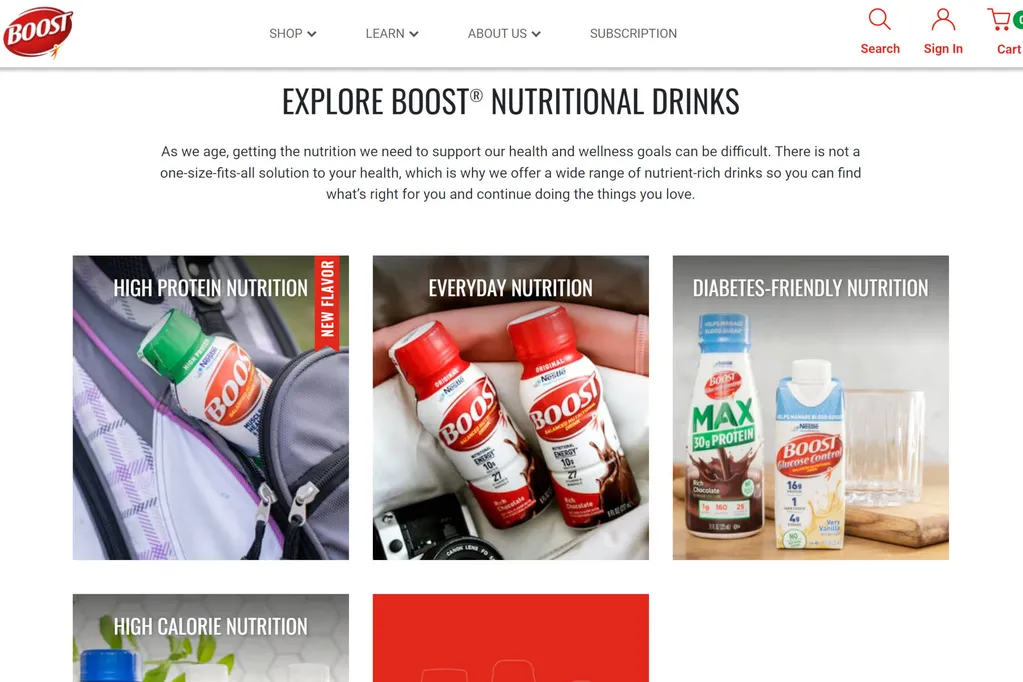
- Taste Profile:
Protein shots are crafted to provide an easy-to-consume, palatable burst of protein. Manufacturers often go to great lengths to ensure the taste is appealing. The use of natural and artificial sweeteners, flavor enhancers, and real fruit extracts help mask the inherent bitterness or blandness of raw protein. - Flavor Variety:
Protein shots come in an array of flavors to cater to diverse palates. Some popular flavors include chocolate, vanilla, strawberry, and tropical fruit blends. More innovative options like mocha, piña colada, or salted caramel are also making their mark. - Texture:
Unlike protein powders that can sometimes feel gritty or chalky, protein shots are usually smooth and easy to swallow. The homogenization process ensures a consistent texture, making the consumption experience pleasant. - Natural vs. Artificial Flavors:
While some protein shots boast all-natural ingredients and flavors derived from real fruits or herbs, others might use artificial flavors to achieve a particular taste profile. It’s essential to check the label if you have a preference. - Sugar Content:
The taste of protein shots can be significantly impacted by the type and amount of sweeteners used. While some brands might use natural sugars or syrups, others could opt for zero-calorie artificial sweeteners. It’s always a good idea to glance at the sugar content, especially if you’re watching your calorie or sugar intake. - Sampling Before Committing:
Given the vast array of flavors and brands, it might be wise to sample a few protein shots before committing to a large purchase. This way, you can find a taste that suits you best.
Taste and variety are critical when choosing the right protein shot. With so many options available, there’s likely a perfect match for every individual’s taste preference. Whether you’re a fan of classic flavors or are eager to try something more avant-garde, the protein shot market has something to offer.
Usage and Dosage
Understanding the appropriate usage and dosage is crucial when incorporating protein shots into your fitness or dietary routine. Proper intake ensures maximum benefits while also avoiding potential side effects.
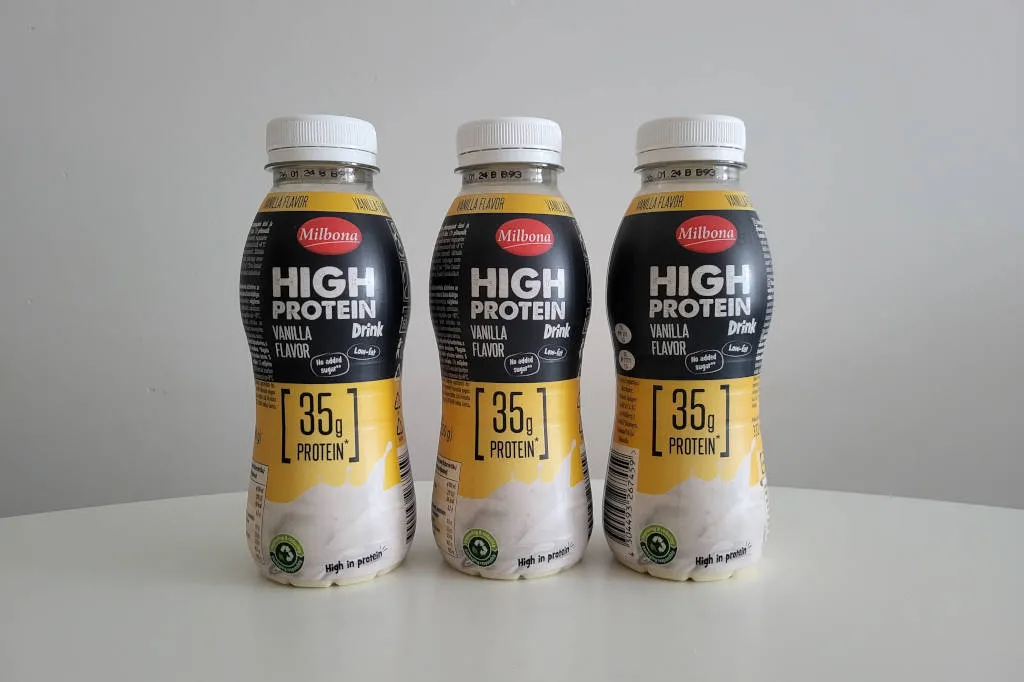
- Directions for Use:
Protein shots are designed for convenience. Typically pre-packaged in small bottles, they require no mixing or preparation. Simply shake well before opening, ensure the seal is intact, and consume the contents in one go. - Recommended Dosage:
The ideal dosage varies based on individual needs, activity levels, and specific fitness goals. On average, a protein shot may contain anywhere from 10 to 30 grams of protein. For those aiming to supplement their daily protein intake or recover post-workout, one shot per day is often sufficient. However, it’s essential to factor in protein from other dietary sources to avoid excessive consumption. - When to Consume:
The timing can influence the effectiveness of protein supplementation. Post-workout is a popular time, as the body requires protein for muscle repair and growth. However, protein shots can also serve as a mid-day boost or a supplement to meals that lack adequate protein. - Who Can Benefit:
While athletes and fitness enthusiasts are primary consumers, protein shots can also benefit individuals with increased protein needs, like pregnant women, older adults, or vegetarians and vegans seeking convenient protein sources. - Interactions with Other Supplements:
If you’re consuming other dietary supplements or medications, it’s wise to consult a healthcare professional. This ensures that the protein shots don’t interfere with absorption or cause any unintended reactions. - Reading the Label:
Always pay attention to the nutritional information and any additional ingredients. Some protein shots might contain added vitamins, minerals, or other performance-enhancing compounds. Know what you’re ingesting!
Incorporating protein shots into one’s diet can be seamless and advantageous when done right. Always remain informed about the product you’re consuming, its dosage, and how it fits into your broader nutritional and fitness landscape.
Potential Side Effects
While protein shots offer a convenient way to supplement one’s protein intake, it’s essential to be aware of potential side effects. Just like any supplement, moderation and awareness are key. Here’s what to look out for:

- Digestive Issues:
Some individuals might experience stomach upset, gas, or diarrhea after consuming protein shots, especially when introduced suddenly to the diet. It’s advisable to start with a smaller dosage and observe your body’s response. - Allergic Reactions:
Ingredients in protein shots might cause allergies in susceptible individuals. Common sources of protein, such as whey, soy, or egg, are known allergens. Always check the ingredient list, and if you have known allergies, be cautious. - Overconsumption of Protein:
Consuming protein excessively can strain the kidneys over time. While it’s challenging to reach harmful levels through protein shots alone, it’s crucial to consider all protein sources in your diet. - Artificial Additives:
Some protein shots might contain artificial flavors, colors, or sweeteners, which could lead to headaches, irritability, or other reactions in sensitive individuals. - Interference with Nutrient Absorption:
High doses of protein can interfere with the absorption of other vital nutrients, like calcium. - Cost Implications:
Regularly consuming protein shots might be costlier than other protein sources. It’s not exactly a physical side effect, but it’s worth considering if you’re budget-conscious.
Being informed about potential side effects ensures that you can enjoy the benefits of protein shots without unintended consequences. Always remember that individual reactions can vary, so it’s essential to listen to your body and consult a healthcare professional if you’re unsure about incorporating protein shots into your routine.
Environmental and Packaging Concerns
Protein shots, while highly convenient, do raise concerns regarding their environmental footprint, particularly in the area of packaging. As with many products in individual servings, the environmental impact can be significant. Here’s what you should know:

- Single-use Plastic:
The majority of protein shots come in small plastic bottles or containers, which can contribute to plastic waste. Even if these containers are recyclable, not all end up in recycling facilities. - Carbon Footprint:
Producing and transporting small, individually packaged items can have a more substantial carbon footprint than bulk items. The transportation of many small items means more trips, leading to more emissions. - Waste Accumulation:
Even if you consume just one protein shot a day, the waste accumulates over time. Compared to larger protein containers that might last a month, daily single-use containers can significantly increase waste. - Sustainability Initiatives:
Some brands are taking steps to offset their environmental impact by introducing biodegradable packaging, partnering with environmental organizations, or launching recycling programs. - Consumer Responsibility:
As consumers, choosing brands that prioritize sustainability and always recycling when possible can make a difference. Furthermore, considering the necessity of the product and exploring eco-friendlier alternatives can also help in reducing environmental impact.
In conclusion, while protein shots offer undeniable convenience and nutritional benefits, it’s essential for consumers to be aware of their environmental implications. By making informed choices and supporting sustainable practices, it’s possible to enjoy the benefits of these supplements while also caring for our planet.
Cost Comparison
When deciding on your protein supplementation, cost can be a significant factor. Here’s a breakdown comparing the costs of protein shots to traditional protein powders:

- Per Serving Costs:
On a per-serving basis, protein shots tend to be more expensive than protein powders. This is due to the convenience, packaging, and formulation of the liquid product. While a protein shot might range from $2 to $5 for a single serving, a serving from a protein powder tub might only cost between $0.50 and $2, depending on the brand and quality. - Bulk Purchases:
Protein powders are typically sold in larger quantities, providing multiple servings per container. This bulk packaging often results in a lower cost per serving compared to individually packaged protein shots. - Convenience Factor:
The convenience of protein shots often justifies their higher price for many consumers. The ready-to-drink format eliminates the need for mixing or blending, which can be especially handy for on-the-go individuals. - Special Formulations:
Some protein shots come with added vitamins, electrolytes, or other supplements, which can increase their price. However, it’s essential to consider if these additional ingredients offer value to your specific nutritional needs. - Brand and Quality:
Premium brands and high-quality ingredients will generally come at a higher price for both protein shots and powders. Always compare the protein source, purity, and any added ingredients when assessing value.
In conclusion, while protein shots might have a higher per-serving cost, their convenience can make them a worthwhile choice for many. However, for those looking for the most economical option, protein powders typically offer a better cost-per-serving value. As always, consider your lifestyle, preferences, and nutritional needs when making a decision.
Popular Brands and Where to Buy
Navigating the market for the best protein shots can be a daunting task given the plethora of options available. Here’s a look at some of the most popular brands and where you can purchase them:
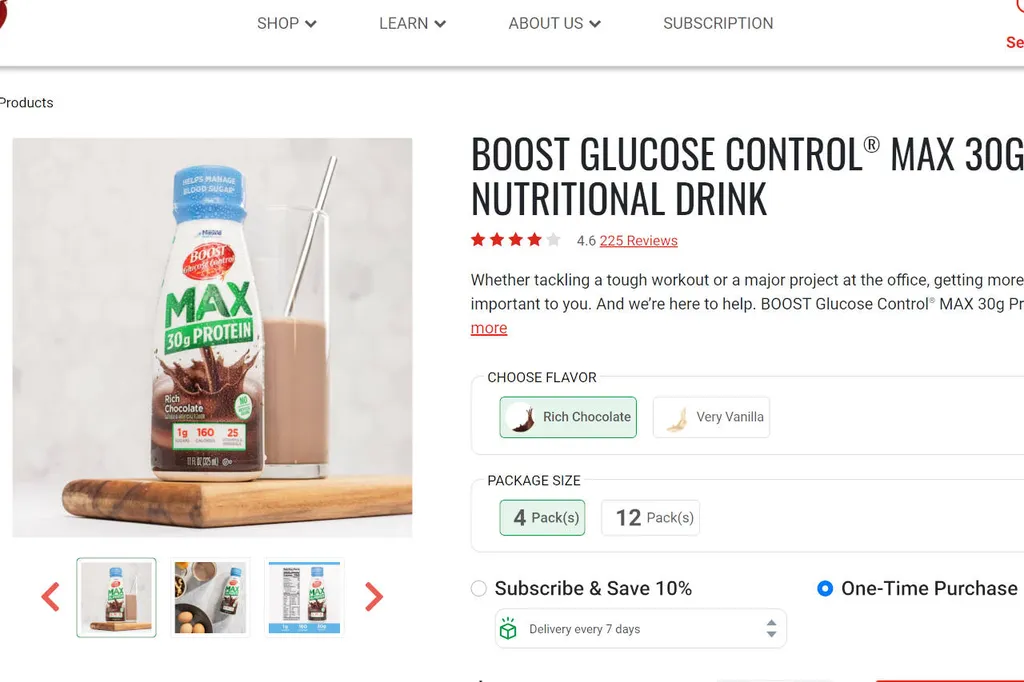
- BoostMax™ Protein Shots:
Recognized for their high-quality ingredients, BoostMax offers a variety of flavors. Their shots are enriched with vitamins and provide a substantial protein boost. Where to buy: Major supermarkets, health food stores, and online retailers like Amazon. - MyProtein Liquid Shot:
MyProtein is a recognized brand in the fitness industry, and their liquid protein shots are no exception. They offer a high protein content in a small, convenient bottle. Where to buy: Directly from the MyProtein website, select fitness stores, and online marketplaces. - Pure Protein Boost:
A brand that emphasizes purity, as its name suggests. Pure Protein Boost shots are not just about protein; they are also enriched with vitamins and come in a compact size, making it easy for those on a tight schedule. Where to Buy: Supermarkets, health food stores, or their official website. - Vital Proteins Collagen Shots:
While most protein shots focus on whey or plant-based proteins, Vital Proteins offers something unique: collagen-based protein shots. These are great for skin, hair, and joint health, on top of muscle recovery.
Where to Buy: Beauty and wellness sections of department stores, as well as online marketplaces like Amazon.
In your quest for the perfect protein shot, these brands represent some of the top contenders in the market. However, it’s always a good idea to check reviews, consult with nutrition experts, and perhaps sample a few before settling on the brand that aligns best with your needs.
DIY Protein Shots: Making Your Own
For those looking to take a more hands-on approach, making your own protein shots can be both cost-effective and fulfilling. It allows you to control the ingredients, flavors, and the protein content that goes into your shots. Here’s a simple guide to making DIY protein shots:
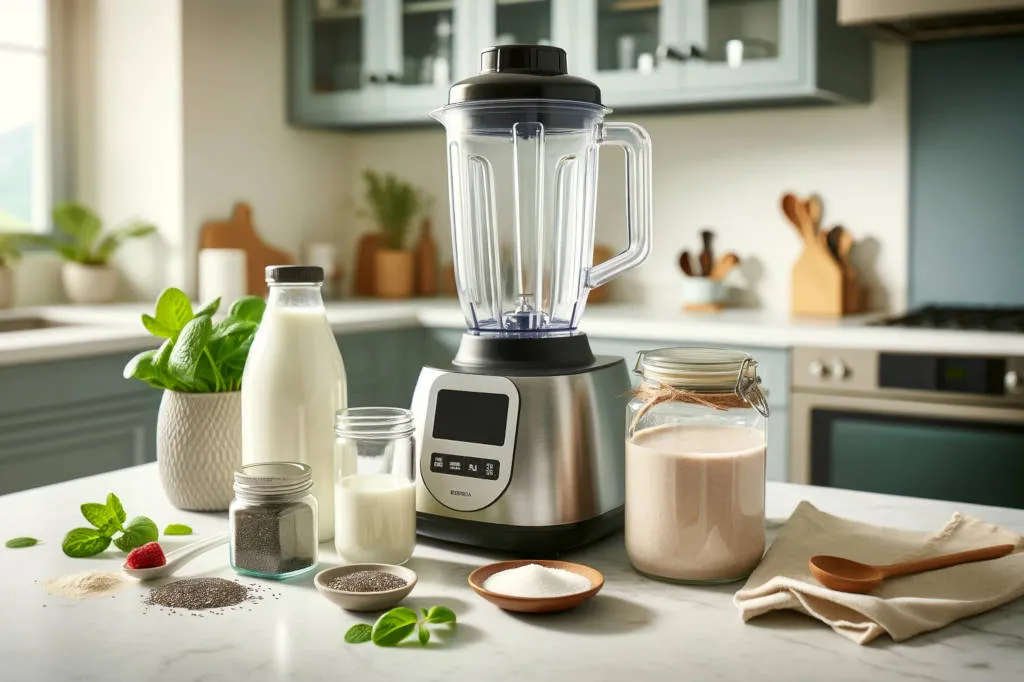
- Select Your Protein Base:
You can opt for whey protein, pea protein, soy protein, or any other type of protein powder you prefer. Ensure it’s of high quality and unflavored to give you more flexibility with taste. - Choose a Liquid:
Depending on your preference, you can use water, almond milk, coconut milk, or any other non-dairy milk. Remember, the goal is to keep the consistency more liquid-like than a traditional protein shake. - Flavoring:
Add natural sweeteners like stevia or honey if desired. You can also add flavor extracts such as vanilla or cocoa powder for a unique twist. - Boosters:
Enhance the nutritional value by adding superfoods like chia seeds, spirulina, or a drop of multivitamin liquid. - Mixing:
Use a blender or shaker bottle to ensure all ingredients are well-combined. Strain if necessary to achieve a smooth texture. - Storage:
Pour your mixture into shot-sized bottles or containers. Store in the refrigerator for up to a week. Ensure they’re well-sealed to maintain freshness. - Usage:
Consume your DIY protein shots post-workout, or whenever you need a quick protein boost. Give the bottle a good shake before drinking.
Making your own protein shots allows for customization and ensures you know exactly what you’re consuming. It’s a fun and innovative way to ensure you get your protein intake in the most personalized manner possible. Happy crafting!
Who Should Consider Protein Shots?
Protein shots, the compact powerhouses of nutrition, have been gaining traction in the fitness and health communities. But are they suitable for everyone? Let’s dive into understanding who might benefit the most from these protein-packed beverages.

- Athletes on the Go:
- For athletes with hectic training schedules, maintaining a consistent protein intake is crucial. Protein shots can be a lifesaver when there’s little time for a full meal or even a protein shake. These shots can be easily consumed during breaks, ensuring that muscle repair and growth aren’t compromised.
- For those keeping an eye on their calorie intake, protein shots offer a condensed source of protein without the added calories of a full-blown protein shake or meal. They can help satiate hunger and maintain muscle mass during weight loss.
- Busy Professionals:
- Not just athletes, but anyone with a packed schedule can benefit. If you’re running from one meeting to another and missing meals, a protein shot can be a quick way to nourish your body.
- Post-operative or Medical Patients:
- People recovering from surgeries or specific medical conditions may have increased protein requirements. Protein shots can be an easy way for them to supplement their diet, especially if they have reduced appetite or dietary restrictions.
- Elderly Individuals:
- As we age, our protein requirements can increase to maintain muscle health. The elderly might find protein shots easier to consume than preparing protein-rich meals, especially if they have appetite or chewing issues.
- Those with Digestive Issues:
- Some people find it hard to digest large protein meals or even shakes. Protein shots, due to their concentrated nature, might be easier on the stomach for those with sensitive digestive systems.
In conclusion, while protein shots can be beneficial for many, it’s essential to align their consumption with one’s specific needs and health goals. As always, consulting with a nutritionist or healthcare professional before making them a regular part of your routine is advised.
Conclusion
Protein shots have emerged as a convenient and efficient way to meet our daily protein requirements, especially in today’s fast-paced world. Whether you’re an athlete, a busy professional, or someone simply trying to maintain a healthy lifestyle, these compact nutritional powerhouses can offer numerous benefits. However, as with all supplements, it’s essential to use them wisely. They shouldn’t replace whole foods but rather complement a balanced diet. Before incorporating protein shots or any other supplements into your routine, always consult with a healthcare professional to ensure they align with your specific health needs and goals. Here’s to making informed choices for a healthier tomorrow!
To expand your understanding of protein-based supplements, don’t miss our intriguing article on protein gummies, where we explore another tasty and convenient way to boost your protein intake.
Additionally, you’re invited to explore our collection of articles:





